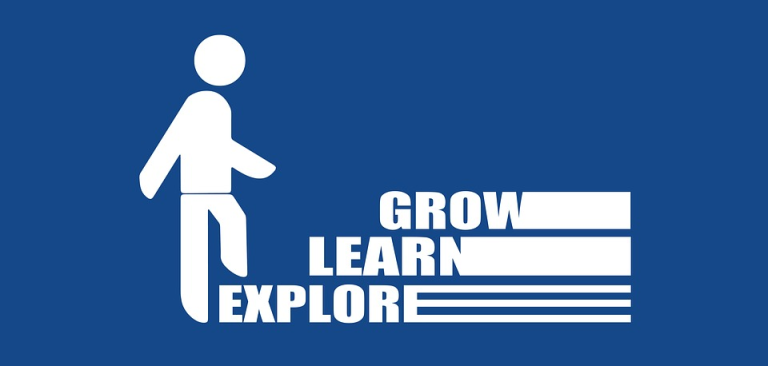
In a perfect world, it would always be easy to deal with stakeholders, co-workers, bosses, and other peers. The truth is, sometimes we have to deal with difficult people in our personal and professional lives. How we deal with people, difficult or not, will be a factor in how far we go in our careers. So, how can we successfully deal with difficult stakeholders and peers without hurting our professional reputations?
We recently asked our leading executives how they deal with difficult stakeholders and peers at work.
Here are their responses…
Ana Smith, Talent Architect & Global Learning Strategist
Managing stakeholders is one of any project manager’s most complex and important responsibilities. The success of any given project or initiative can frequently depend upon stakeholder collaboration and satisfaction, which is why it’s essential to give careful attention to their needs.
However, managing difficult stakeholders and peers can be, and therefore become, quite challenging, so it’s important to anticipate and manage them effectively. They might not be open and forthcoming in their communications, or they may only offer negative feedback. Some stakeholders may be frustrated at the progress of the project or may not seem to be very engaged in the work. These are some basic areas that you need to focus on in successful stakeholder management: identifying stakeholders (internal and external), understanding stakeholder needs, meeting their needs, underpromising and overdelivering, listening to stakeholder concerns, frequently communicating, amongst others. If not done properly, they can result in spectacular project failures.
There is an “Iron Triangle” on which experienced project managers focus on. This consists of 1) quality/scope, 2) budget, and 3) time. If stakeholders or sponsors want more in the deliverable (i.e., more features) then something has to give. The project will take longer, or it will cost more, or it will be a little of both. If they want to lower costs, they probably cannot do it without decreasing scope or increasing timelines. Stakeholders will need to understand that, and the project manager needs to be consistent on this point.
A poor appreciation of stakeholder management can often lead to catastrophic decision-making which ultimately leads to more cost, longer timelines, and diluted benefits.
Ana Smith helps people & organizations achieve their full talent potential by developing and co-creating people strategies and customized solutions, and turning them into impactful outcomes and collaborative relationships, using coaching as the “red thread.”
Andrea Markowski, Marketing Executive

When I think of difficult people, my college job years ago as a part-time credit card bill collector comes up. People were often on their worst behavior when I called.
Thankfully, we were trained to handle these situations. In essence, you must listen to ALL objections before you can ask someone to agree to a request. It was a valuable lesson about human nature, listening, and empathy.
What does this look like, and how can you use this method?
Step one: Be patient and listen while someone might vent, complain, or express the issues preventing them from doing something.
Step two: Acknowledge what theyâve said and the feelings expressed.
Step three: Repeat steps one and two until there is no more air to clear. Do not move on until the upset person has had their complete say.
Step four: Transition to what you need and âwhatâs in it for meâ (them)âa WIIFMâif they comply.
Also, never accept insults or rude language. In the bill-collecting world, we had permission to hang up if things got out of hand. In your real life, you have permission to leave the situation until cooler heads prevail.
Andrea Markowski is a marketing director with specializations in strategy development, digital tactics, design thinking, and creative direction. She has superpowers in presentations and public speaking.
Lynn Holland, VP Sales & Business Development

Take a job, win a client, use a dating app, and youâre amongst people with hurts, hang-ups, and emotions like fear, anger, and insecurity near the surface. Add modern pressures and poof! Disagreement, bias, and attitude. An inevitable evil, here are some tools for influence and goodwill:
Peers
1. Seek to understand their POV and why (internal/external influences)
2. Suggest reaching the best company/collective outcome vs. personal preferences
3. Consider if ideas #1 and #2 can be combined for an even better solution (ideal outcome)
4. If #3 fails, translate #1 and #2 into their respective cost/benefit for the company/collective
Stakeholders
1. Build individual profiles – job responsibilities, fears, and biases that internally motivate rejecting or buying into ideas or initiatives
2. Correlate ideas or initiatives to serving their inner personal interests without risk
3. Partner and collaborate with an internal champion motivated to build support for ideas or initiatives that improve the workplace
Lynn Holland is a business development executive with 18+ years of experience taking operational, IoT & retail technologies, products, & consumer engagement to market with a focus in petroleum & convenience retail.
Michael Willis, Sports Business Operations Executive

How to deal with difficult stakeholders and peers:
1. The first step is to identify the stakeholder. While everyone on the team has value, I would identify the threat to the team. The overall mission and objectives of the team must be met. If there is a weak link, executives and team leaders need this information.
2. Like any other threat the team encounters, the difficult stakeholderâs activities must be monitored.
3. Meet them one-on-one to discuss the facts that have been gathered. Donât just rely on second-hand information. Keep the conversation free-flowing. Let the difficult stakeholder do all the talking.
4. Determine the motivation behind the recent behavior.
5. Remind the difficult stakeholder of their place on the team and, most importantly, the mission and goals the group must meet.
6. Determine their motivation. Try to find out what triggered the behavior. Offer remedies or solutions.
7. Create a success story to create new energy and purpose. Tell the stakeholder how the team is valued and viewed by the company.
8. Develop a perpetual communication stream that flows in every direction. As executives, itâs our job to fix problems. But I feel itâs even more important to get ahead of issues before they become problems.
Michael Willis has 18+ years of experience working with accounting & sports organizations and has managed P&Ls of $10M – $125M+ with budgets of $3M-$50M+. He worked for the NFL for 22 1/2 years, mainly with the game officials working on the financial/accounting side of the business.
Mark Taylor, Product & Operations Executive

âDancing Monkey (DM): the length of time between giving someone work to do and your brain wondering why you havenât seen any product yet.â
If a stakeholderâs DM works on a more frequent cycle than yours, they might come across as âdifficult.â
To work out a stakeholderâs DM and stay one step ahead, use informal, face-to-face communication.
E.g.: âAccidentallyâ walk past their office the day after you were given the work.
YOU: âHi, not stopping, know youâre busy…â
THEM: âHowâs it going?â
YOU: “All good. By the way, Iâm cracking on with that work from yesterday.”
THEM: “Great. Could we review what you’ve done so far now/later/tomorrow/next week?”
(Hereâs where you find out whether youâll be burning the midnight oilâor if you have a few daysâ grace.)
Do this a few times and youâll soon become calibrated with a stakeholderâs DM, a means of managing their âdifficultâ tendencies better.
Mark Taylor has 20+ years of risk, technology, and product management experience working in global and regional financial services firms in the UK and the U.S. He’s managed teams of 40+, successfully addressed 100+ regulatory issues, and has saved companies $15M+.
Lisa Perry, Global Marketing Executive

At this point in my career, I am an expert in dealing with difficult stakeholders and peers regarding how often this has happened to me in a work situation. That said, itâs never easy and takes patience, empathy, communication, collaboration, and your eye on the end goal to ensure you succeed. Here are a few tips Iâve learned that might help you with this situation:
- Patience: The key here is to keep your cool as temperatures rise. Take the emotion out of the equation. If that means you need to step away, do it. Itâs essential to be objective, calm, and professional.
- Empathy: Remember the saying, âSeek first to understand, then to be understood,â from Steven Coveyâs book, The 7 Habits of Highly Effective People? People want to be heard. Let them talk, and have them get their frustrations out. Even if you disagree, be quiet. It will be to your advantage. Itâs important to understand where their negativity is coming from so you can address it. You will have time to speak. Give them the first round.
- Communication Is Key: Itâs essential to tailor your communication to their style when dealing with difficult stakeholders and peers. Ask them what works for them. Iâve also found that asking these two questions in emails helps clarify any miscommunication: does this match what you need, and did I miss anything?
- Collaborate: Above all, you need to collaborate and show that you have their best interest at heart and you want to work with them and figure out the best path forward.
If you stay focused on the end goal and try not to get caught up in the emotional turmoil of dealing with difficult individuals, you might be surprised at how effective this approach can be.
Lisa Perry helps companies build leadership brands, driving loyal customers & delivering profitability. She does this through a process that builds brands consumers love. Her goal is to help companies develop, monetize, and grow their brands.
How do you deal with difficult stakeholders and peers? Join the conversation inside Work It Daily’s Executive Program.








































